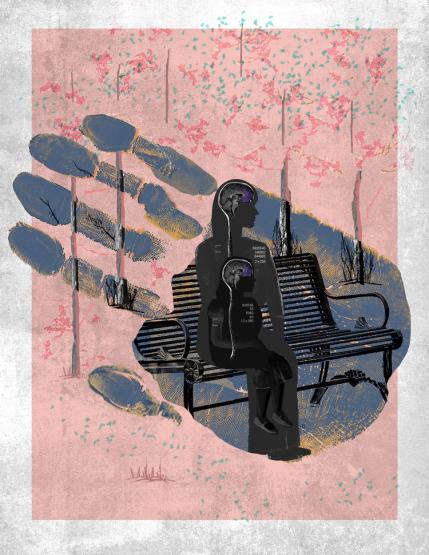The assignment is this: explicate your favorite song as we have been explicating poetry for the last several weeks in Introduction to Literature. I get mostly the usual: Britney Spears or Kelly Clarkson from the sorority girls; some Dylan from the over-achievers who want to impress me with their dedication to the assignment; Grateful Dead from the long-haired kids; Jack Johnson or John Mayer from the girls with bare midriffs and navel rings. I want them to understand literature through lyrics, to assess the world through words, but they’ve mostly cut-and-pasted, clinging to cliché and settling on summary instead of searching for any meaning in the song.
E-- brings in a song by Rascal Flatts in which a high school girl has cancer. During her chemotherapy treatments she loses her hair. She is worried about, among many other things, how she will look for her prom, but on prom night her boyfriend shows up with his head shaved in hopes of allaying her fears. The song, E-- tells us, is based on a true story.

She also tells us that she has recently been diagnosed with cervical cancer. She flies home every weekend for chemotherapy treatments. She leaves my class at 4pm Thursday and boards an airplane for home, where she will be hooked to a machine that pumps poison through her veins and drains all her energy and sends her spinning to the restroom every few hours to kneel on the tiled floor and empty herself of everything. On Monday she flies back and attends her classes. She is afraid of, among many other things, losing her hair.
My class claps quietly after she has finished speaking. We sit stunned through the Dixie Chicks, Billy Joel, Don Henley. In the hallway outside the classroom E-- is waiting for me. She is smiling. She is young, twenty perhaps. She apologizes to me for failing the assignment. She says she couldn’t remember everything she wanted to say, so she only summarized the song. She missed the bigger meaning, she says.
My class claps quietly after she has finished speaking. We sit stunned through the Dixie Chicks, Billy Joel, Don Henley. In the hallway outside the classroom E-- is waiting for me. She is smiling. She is young, twenty perhaps. She apologizes to me for failing the assignment. She says she couldn’t remember everything she wanted to say, so she only summarized the song. She missed the bigger meaning, she says.
I hold out the part of her presentation she handed in, and that I read biting the inside of my mouth hard enough to bring blood while the rest of my students were struggling through their songs. “You had it all written down.”

She is twenty, young, perhaps dying. I am thirty-one. I drink too much on the weekends and worry about my job, whether I am accomplishing anything in the classroom. I worry if my wife and I are eating right and exercising enough, if we are putting enough money away for our children’s college funds, if we can afford to fly home this summer, where I can buy a new CD with lyrics I haven’t listened to.
“I didn’t present it right,” she says. “I guess I was afraid.”
Looking at her I am thinking about fear: the fear of losing your hair, losing weight, losing your life. About drugs that run rampant through your body, changing moods and balances and outlooks. About cells that multiply and mutate and take over. About being twenty years old and flying home every weekend to sit in a cancer ward while trying to find the greater significance in some stupid assignment an adjunct literature professor has given you, yet still being scared of standing in front of a class and explaining what a few words might mean beyond the surface of a page or the lyrics of a song.
But I don’t say any of that. Like my students, I cling to cliché. I settle for summary.
“Don’t worry,” I tell her. “You’re doing fine.”
Illustrations by: Anthony Tremmaglia, an Ottawa-based illustrator, artist, and educator. His clients include WIRED, Scientific American, Smart Money, HOW, and San Francisco Weekly. Anthony is featured in issues 299.1, Winter 2014 & 299.4, Fall 2014 and his most recent work (top illustration featured above) will be in upcoming 300.3, Summer 2015. Find more of Anthony’s work at http://www.tremmaglia.ca/





